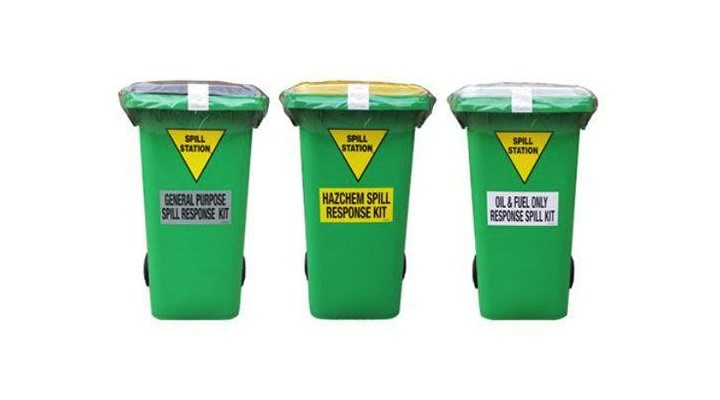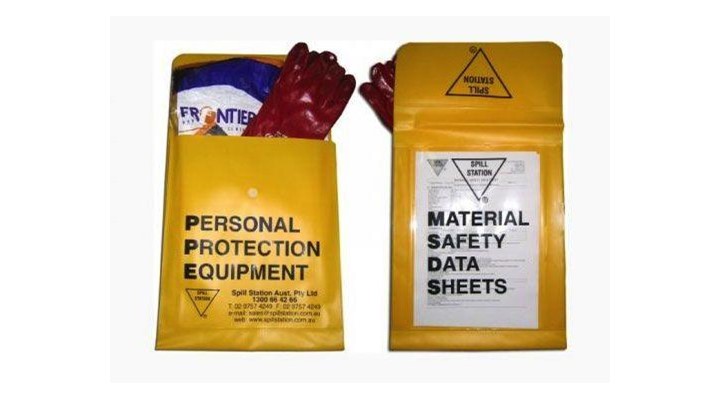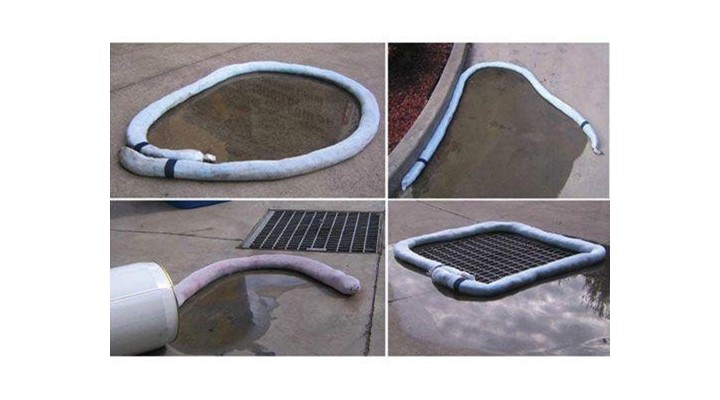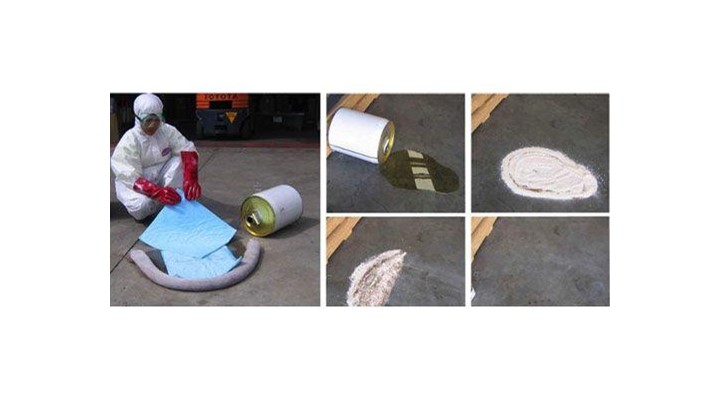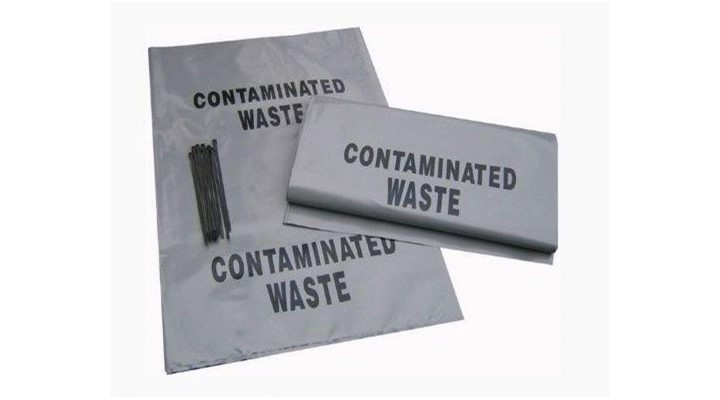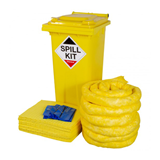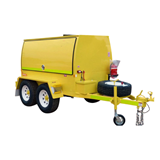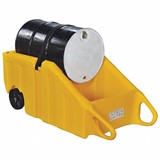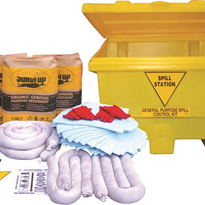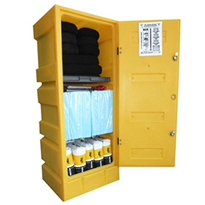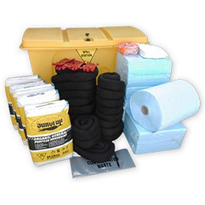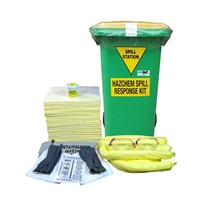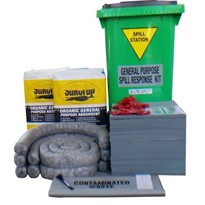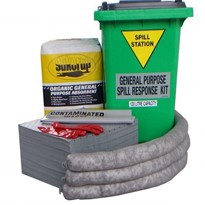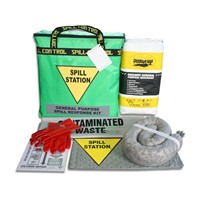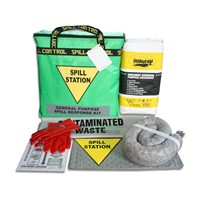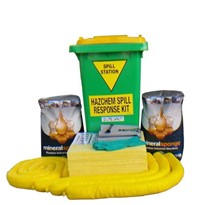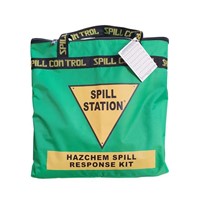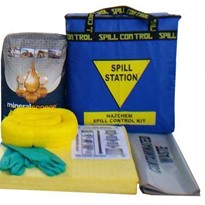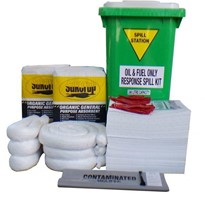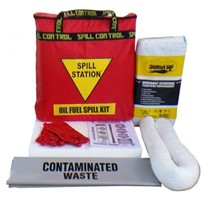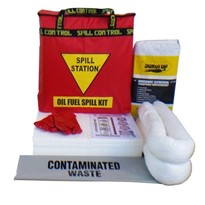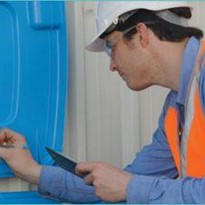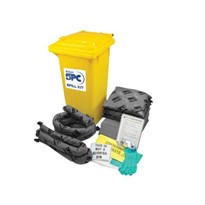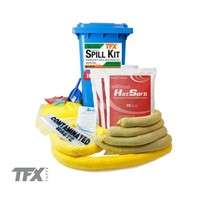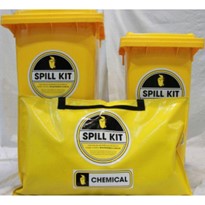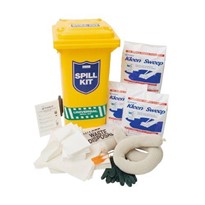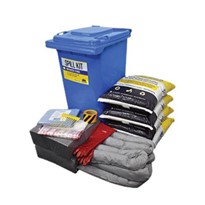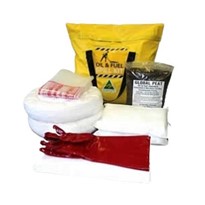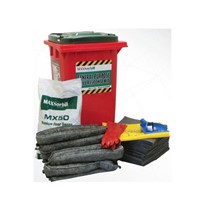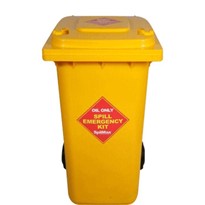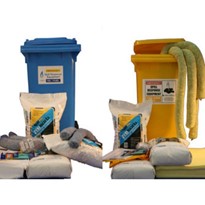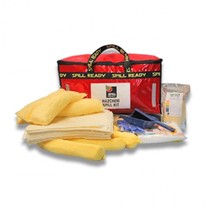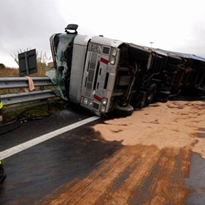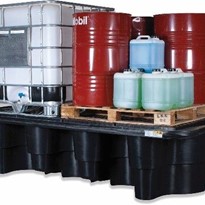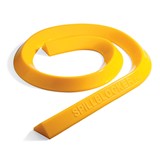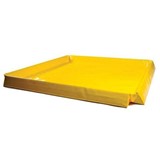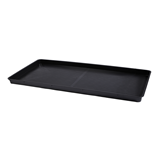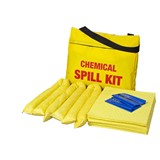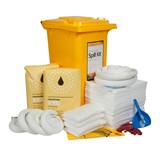In its simplest terms, a spill kit must covert spilled liquids into a solid manageable form so that it can be safely collected and deposited into the correct and lawful waste stream.
The spill kit needs to be suitable for the liquids that are stored, used and decanted in the specific area of the workplace and must be readily identifiable to promote rapid response.
An effective spill kit needs to be able to do 4 things.
- Provide personal protection
- Contain the spilled liquid
- Absorb the spilled liquid
- Prepare contaminated items for disposal
Personal protection equipment (PPE)
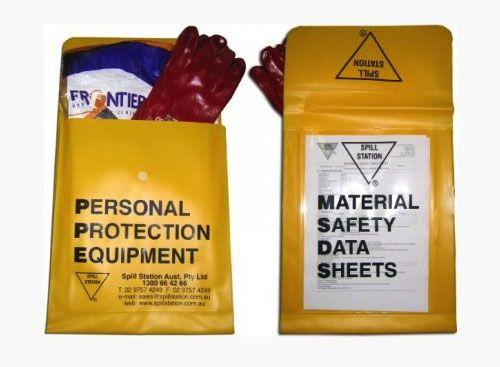
In order to safely address any spill, the correct personal protection equipment (PPE) must be worn. The appropriate PPE for cleaning up a spill is determined by the handling precautions of the spilled liquid. This information can be found in Section 8 of the SDS of the spilled liquid.
Most spill kits contain basic PPE however you should consult your SDS to ensure the correct PPE is readily available.
Initially, a spill kit is used to minimise the area effected by the spilled liquid. Minimising the effected area greatly assists with the spill clean up by:
- Minimise site contamination
- Minimise interruption to workplace activities
- Reduce the amount of absorbent required
- Increase the speed of clean up
- Reduce the size of a potential slip hazard
Booms

The primary tool of spill containment is a boom. Booms are a tube of absorbent material and are generally in two sizes. The smaller size is 1.2m and the larger size is 3m. Most booms for spills on land are 75mm diameter.
Generally, a spill is moving towards a drain point. The booms are deployed in the path of the spill to minimise the area effected by the spreading liquid and facilitate fast clean up.
Absorbents
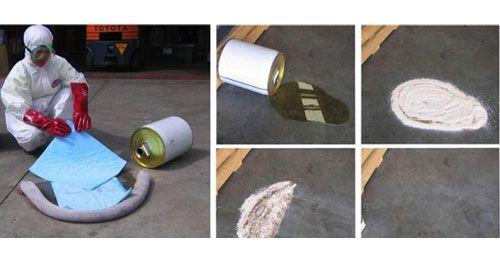
One the spilled liquid is contained, it needs to be converted into a solid. To achieve this, spill kits commonly contain two forms of absorbent. The first is absorbent pads that are placed directly onto the spill. The second form is a loose absorbent that is swept through the pooled liquid to produce a manageable solid. They are usually in the form of an absorbent pad or a loose absorbent.
Contaminated waste bags
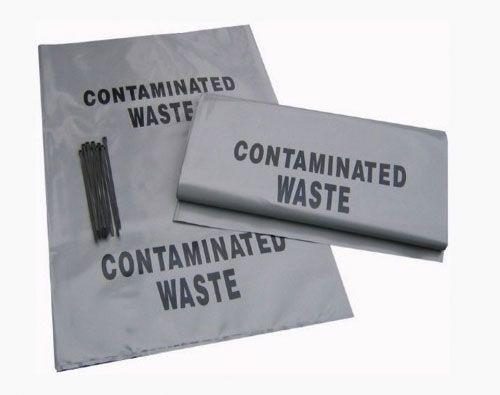
Contaminated waste bags are a standard spill kit inclusion to hold the contaminated absorbents prior to disposal into the correct waste stream. The waste bags must be strong enough to hold the contaminated absorbents. They should be a minimum of 70um and should be clearly labelled “CONTAMINATED WASTE”.
All waste should be disposed of in accordance with your local, state and federal regulations. If in doubt, consult your current waste service provider.
A shovel and broom is a very handy addition to a spill kit if it contains a loose absorbent. As spill kits are often used to clean up spills of flammable liquids, a non-sparking shovel is recommended.


